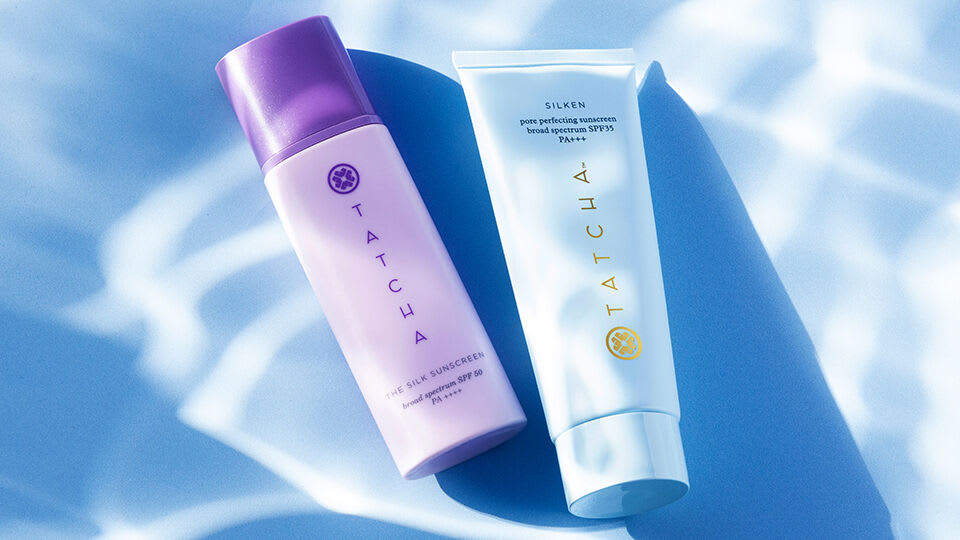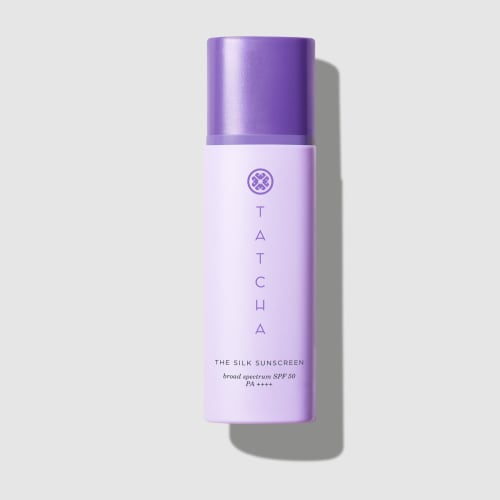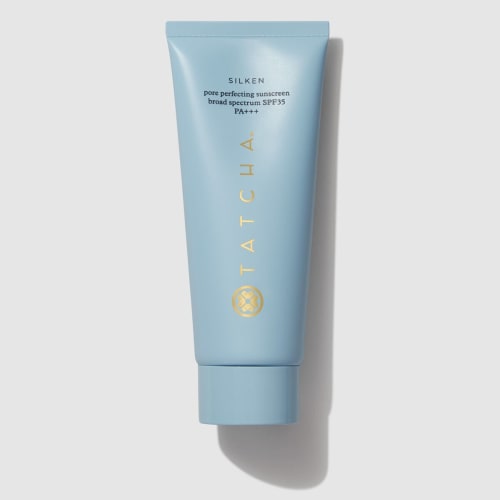So many skin types, so many sunscreen formulas. Which one is right for you?

There's a sunscreen for every skin type, and then some—the options are nearly endless. That’s a good thing, because sun overexposure is one of the primary causes of skin aging, as well as the primary cause of a host of other issues, up to and including skin cancer. Sunscreen might be the most recommended topical skincare product of all time. It’s made to be worn by every face.
Narrowing down the best sunscreen for your skin type simply requires understanding your skin’s goals and selecting the right ingredients and formulas to support them. So for now: A brief skin school. Then later: How to choose the best sunscreen for your skin type.
Determining Your Skin Type
There are three mutually-exclusive skin types—dry, oily, and combination—that are delineated more or less by how much sebum your skin produces on its own. If you see a specialist like a dermatologist or aesthetician frequently, it’s a good idea to ask them for feedback on your skin type, but there are two ways to get a good look at the state of your skin on your own:
- The Bare-Face Method. Wash your face with a mild cleanser, pat it dry, and wait for 30 minutes. Observe your skin. Then wait another 30 minutes and observe your skin again. If your skin still feels tight, even parched, you probably have dry skin. If your forehead and nose are shiny, you may have combination skin—if the cheeks are shiny too, oily skin is your best bet.
- The Blotting Paper Method. A good blotting sheet instantly (and gently) removes excess oil from skin—but it also works as a skin type test in a pinch. Simply pat one sheet over your cheeks, another over your nose and forehead, hold them to the light, and examine the results. If both sheets are translucent, oily; if neither, dry; and if cheeks came back dry but the other is soaked, you could be combo.
In addition to being any of the above, your skin can also be sensitive, which is typified by frequent reactions to products and materials. And all skin is aging, and thus all skin eventually becomes described as mature skin, usually in a person’s 40s. These are broad categories for billions of unique individuals, but help describe your skin’s behavior on a basic level. (Here’s a more detailed guide to figuring out your skin type.)
Understanding Different Kinds of Sunscreen
In the United States, there are two main categories of sunscreens, which are distinguished by their main active ingredients: Physical sunscreens and chemical sunscreens.
Physical sunscreens make use of finely milled minerals, like zinc and titanium dioxides. There are also chemical sunscreens, which utilize filters like octinoxate that absorb UV radiation. Chemical sunscreens are no less chemical than physical ones, or any topical, for that matter—water is, after all, technically a chemical—but are particularly prized for their lightweight feeling on skin.
While there are key differences in how physical and chemical sunscreens work and feel on the skin, both are effective protectors, and are totally safe to use. But some skin types have their favorites. Physical sunscreens made with minerals tend to be preferred by sensitive faces as they’re less likely to cause stinging or clog pores. Chemical sunscreens, on the other hand, are sometimes actively avoided by dry skin types—the quick drydown can be great on oily or combination skin, but leaves dry skin feeling tight. It’s up to you, the customer, to parse the ingredient label for yourself. Don’t forget to check with experts like dermatologists and aestheticians or online resources like INCIDecoder for extra information.
How to Choose a Sunscreen for Your Skin Type
Of course, many sunscreens—both physical and chemical—augment their active ingredients with other skincare ingredients that can provide extra benefits for common skin issues.
For dry skin. It’s not too difficult to spot a good dry-skin moisturizer. Ingredients like ceramides and hyaluronic acid that occur naturally in the skin (and help it perform its barrier function) are also commonly found in sunscreens suited for dry skin. A mineral formula with some thickness and hydrating skincare to it might be a good place to start.
For oily skin. Some people with oily skin prefer chemical sunscreen for how they sink immediately into skin; others who lean acne-prone like mineral formulas that aren’t as likely to sit in the pores and cause breakouts. There are plenty of sunscreen formulas designed for those with oily skin, both mineral and chemical, that incorporate niacinamide, which has two-fold purifying and protecting power: It can help decongest pores and prevent buildup of oil and dirt.
For mature skin. This skin type has an added impetus for sun protection, because the effects of aging are accelerated by sun overexposure. Those with mature skin type should choose a sunscreen made with reparative ingredients, like antioxidants, which can help fight cellular damage, including damage caused by photoaging.
For sensitive skin. For sensitive skin SPF, avoid formulas that include added fragrances or dyes, both of which can be potentially irritating. Dry sensitive skin might respond well to hydrating ingredients that have skin soothing benefits. A non-comedogenic (read: won’t clog pores) formula, on the other hand, is great for oily sensitive skin that might be prone to blemishes.
The Best Sunscreen for All Skin Types
Accelerations in skincare technology have also made it possible to create sunscreens that work well for all skin types. Often, these products are gentle, and made free of potential aggravators. They also tend to have a “perfecting” effect due to their ability to balance out skin—not too glowy, not too matte.
One such formula, Tatcha’s Silk Sunscreen, is a hydrating mineral sunscreen that is as light as air. The SPF 50 formula also includes niacinamide and hyaluronic acid, along with just-like-skin silk extract—it blends in sheer, leaving any skin type feeling silky smooth.
Another, the Silken Pore Perfecting Sunscreen, is an SPF 35 formula that provides a seamless blurring effect—along with antioxidants necessary to protect against cellular damage. It’s a brand best-seller for a reason: It’s beloved by all sorts of skin types, from oily and acne-prone to dry. (One reviewer called it “probably the best sunscreen I’ve ever used.”) Unlike the Silk Sunscreen, this one is mineral and chemical—the best of both worlds.
Other Suncare Tips
Sunscreen is a great way to protect yourself from the sun, but it’s not the only way, and nor should it be. Another word for sunscreen is sunblock, though the word has fallen out of favor since 2011 when the FDA banned its use in product marketing. Topical formulas can’t “block” rays—some absorb them, others reflect them, and all of them require reapplication. Try to outfit your sun protection wardrobe with a few other options for guaranteed protection.
- Wear clothing with UPF, or ultraviolet protection factor. If anyone can make suncare look chic, it’s probably you.
- Don’t forget accessories. A wide-brimmed hat or gloves—or even a parasol—can take any look to a skin-healthier level.
- When the sun is high, remain inside. Barring the occasional picnic or beach day, try to stay inside between 10 AM and 4 PM, when UV light is harshest.
- Stay shady. Beneath an umbrella is a great place to be. So is on the shadier side of the street.
- Sunglasses are essential. Though neither food nor drug, the FDA even recommends sunglasses for sun protection. Sunlight reflected from sand, surf, or snow can do serious harm to your eyes and the skin around them, but sunglasses with UV filters can help keep you safe.
- Check your windows. Especially if you spend stretches of time in front of them—if your desk is by a window, perhaps—consider adding UV-filtering blinds so your skin doesn’t bake. Good old-fashioned curtains work too.
- Get your skin checked. It could save your life, but it’s much more likely that it’ll offer you peace of mind. The Skin Cancer Foundation recommends getting skin checks from your dermatologist once a year. Is yours scheduled yet?



